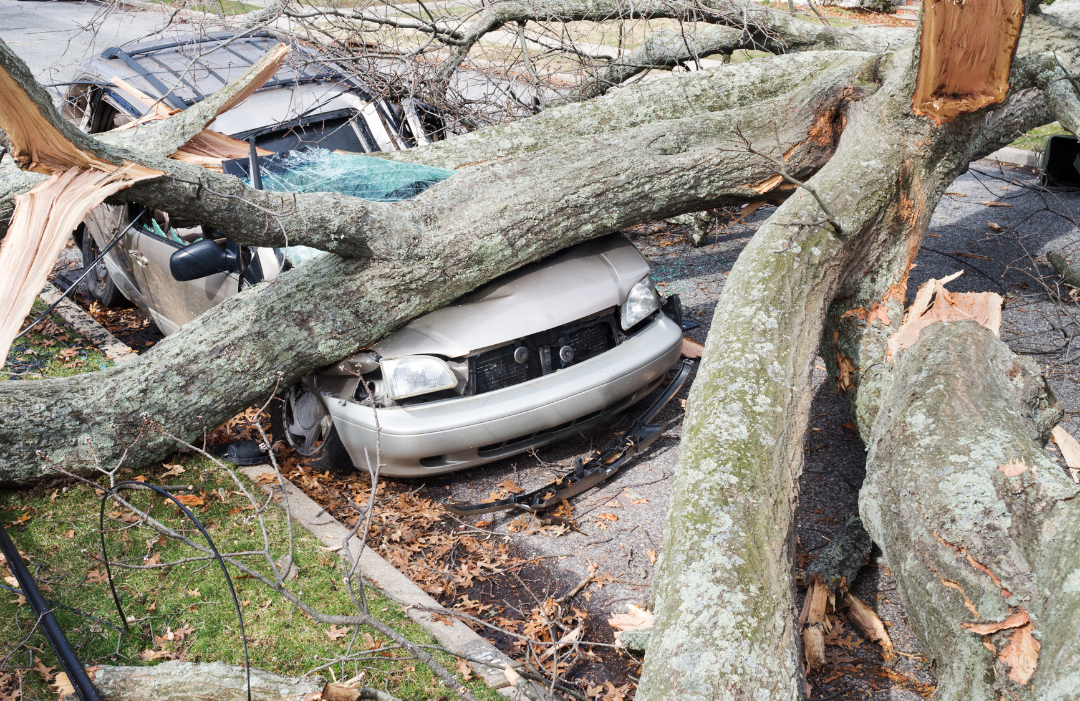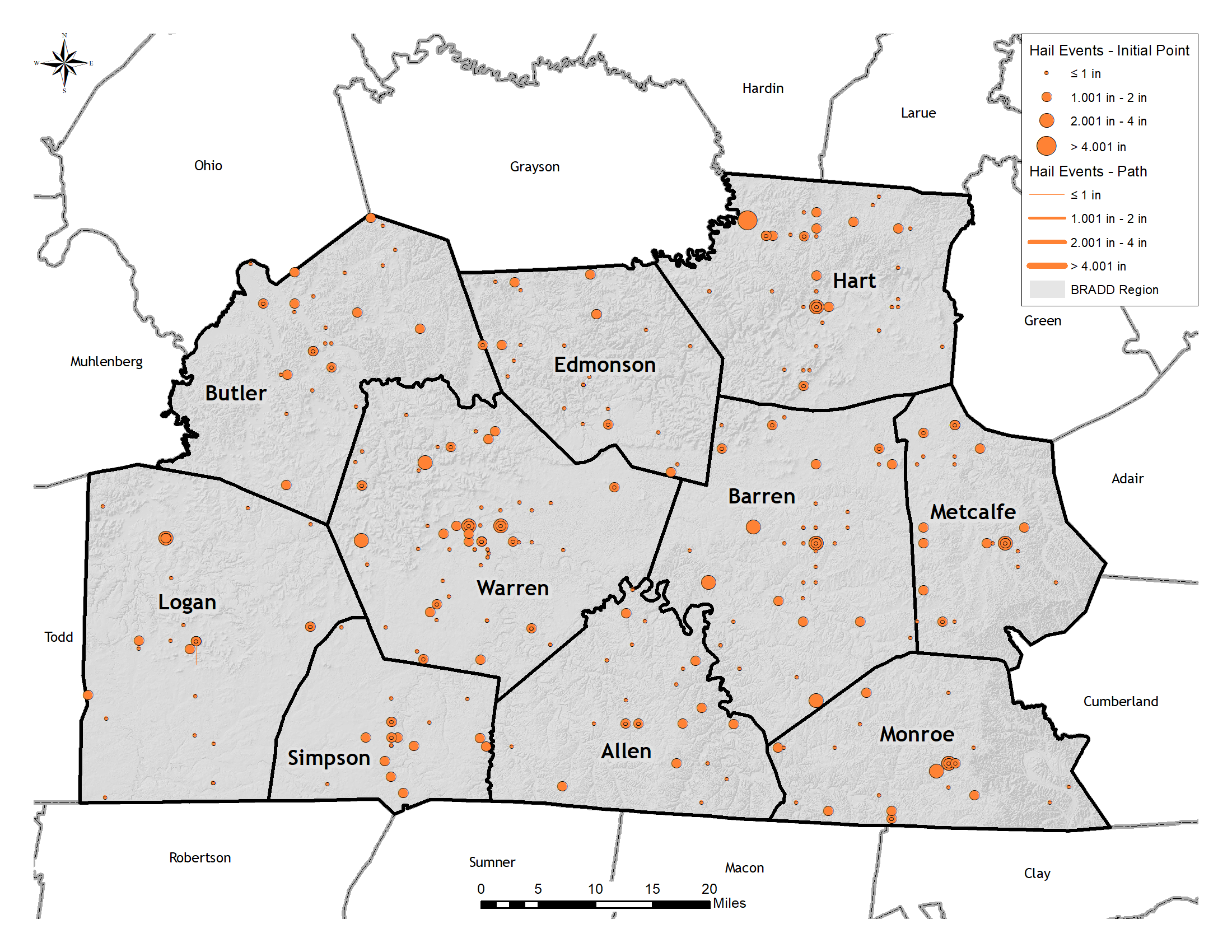Severe Storms

A severe storm is an atmospheric disturbance that results in one or more of the following phenomena: strong winds and large hail, lightning, thunderstorms, tornadoes, rain, snow, or other mixed precipitation.
The following severe storm elements are considered for this profile (using National Weather Service definitions):
Severe Thunderstorm is a rain shower during which you hear thunder. Since thunder comes from lightning, all thunderstorms have lightning. A thunderstorm is classified as “severe” when it contains on or more of
the following: hail three-quarter inch or greater, wind gusts in excess of 50 knots (57.5 mph), and tornado. The hazard profile for severe storm will evaluate hail, wind, and lightning strikes in the BRADD region. Tornadoes have
a separate hazard profile.
Straight-line wind occurs when a current of air in which the ground-relative motion does not have any significant curvature and, in extreme cases, have the potential to exceed 100 miles per hour. The severity and damages occurring during straight-line wind events directly correlate to estimated wind speed.
What Causes a Thunderstorm?
Thunderstorms are typically caused by convection that occurs when the sun has heated a large body of moist air near the ground. This air rises and is cooled by expansion. The cooling condenses the water vapor present in the air, forming a cumulus cloud aggregation of minute particles of water or ice suspended in the air. If this process continues, the summit of the cloud often attains a height of 4 miles above the base, and the top spreads out in the shape of an anvil.
The turbulent air currents within the cloud cause a continual breaking up and reuniting of the raindrops, which may form hail, and builds up strong electrical charges that result in lightning. As the storm approaches an area, the gentle flow of warm air feeding the cloud gives way to a strong, chilly gust of wind from the opposite direction, blowing from the base of the cloud. Intense rain begins and then gradually diminishes as the storm passes.
Types of Thunderstorms:
- Ordinary cell: As the name implies, there is usually only one cell with this type of thunderstorm. Also called a “pulse” thunderstorm, the ordinary cell consists of a one-time updraft and one-time downdraft.
- Multi-cluster cell: While each individual thunderstorm cell, in a multi-cell cluster, behaves as a single cell, the prevailing atmospheric conditions are such that as the first cell matures, it is carried downstream by the upper-level winds and a new cell forms upwind of the previous cell to take its place.
- Multi-cell line: Sometimes thunderstorms will form in a line, which can extend laterally for hundreds of miles. These “squall lines” can persist for many hours and produce damaging winds and hail.
- Supercell thunderstorms are a special kind of single cell thunderstorm that can persist for many hours. They are responsible for nearly all of the significant tornadoes produced in the U.S. and for most of the hailstones larger than golf ball size. Supercells are also known to produce extreme winds and flash flooding.
- Straight line winds are winds that come out of a thunderstorm. To be classified as severe, they must exceed 58 miles per hour.
Cascading Effects of Severe Storms:
- Lightning
- Flash Floods
- Hail
- Outflow
- Tornadoes
- Winds



